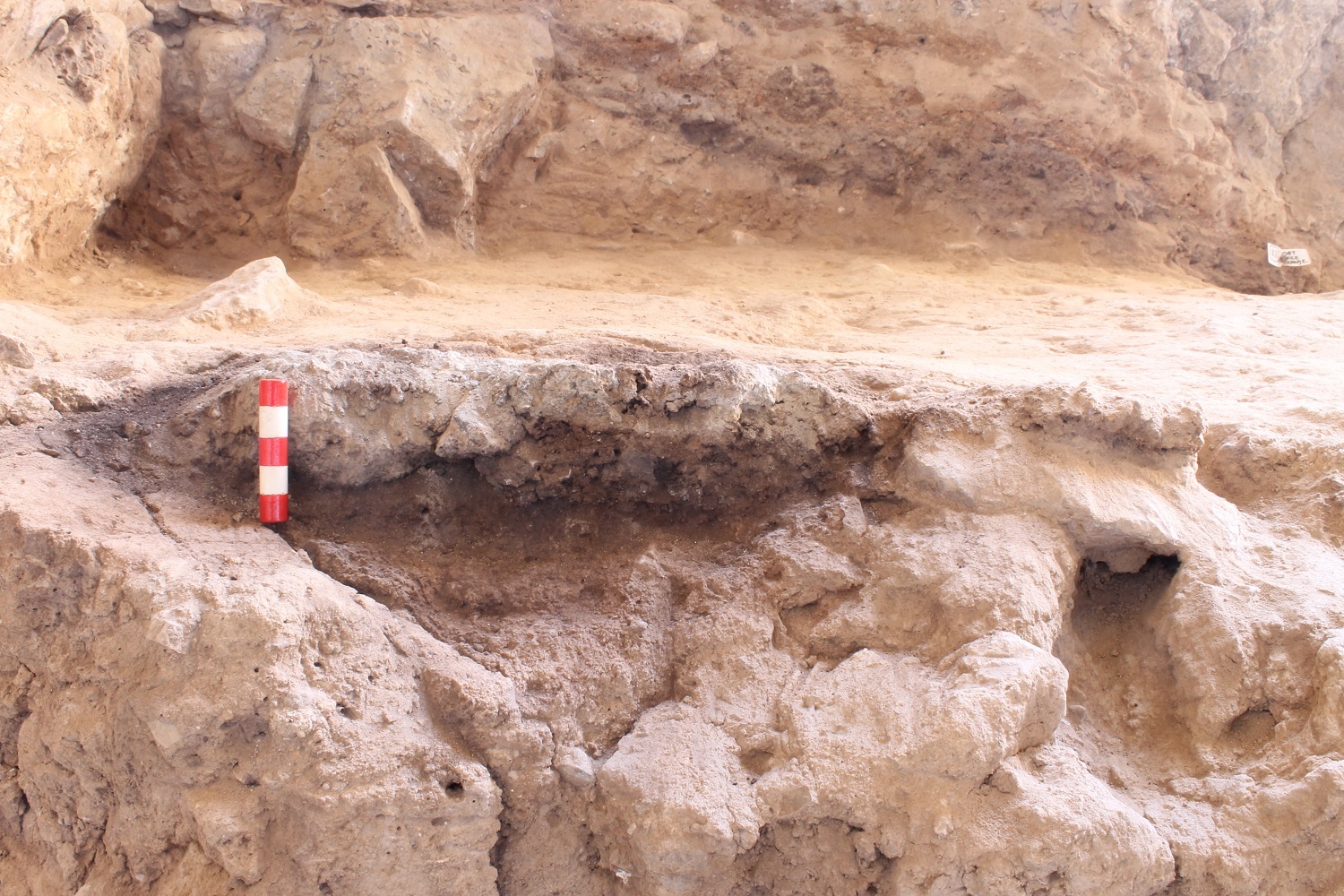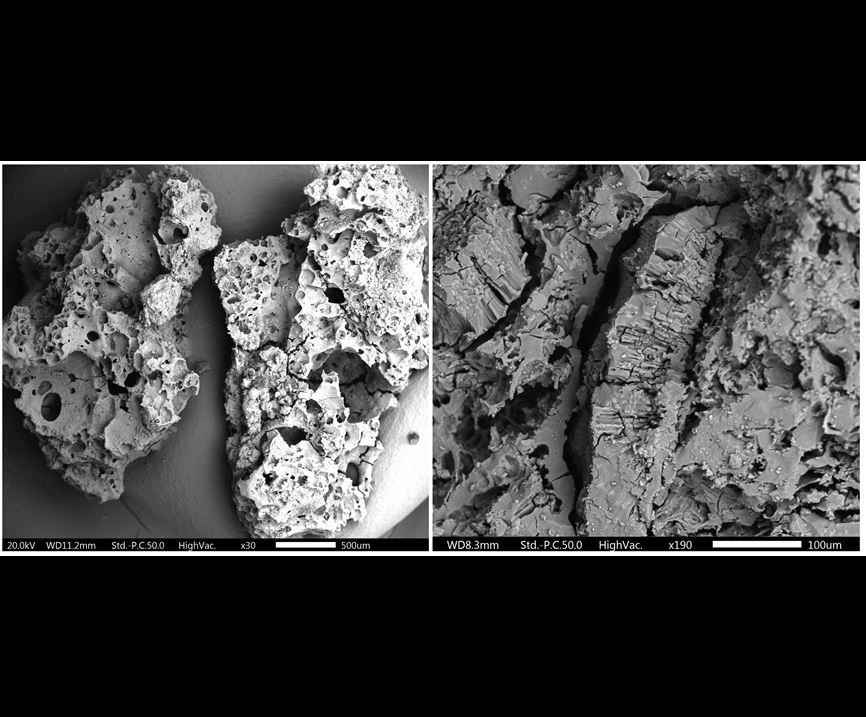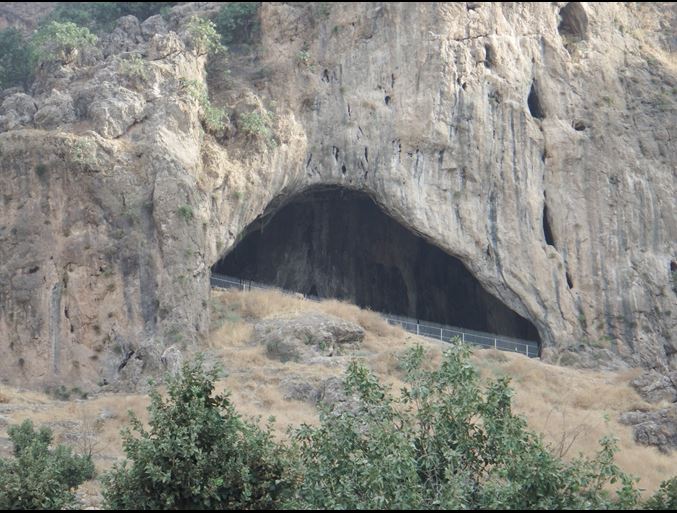Is this the world's oldest oven?

Archaeologists have unearthed food remains from as long ago as 70,000 years ago that indicate our ancestors were flavouring their food in much more sophisticated ways than earlier thought.
The hearth - just over a metre from the recently-found Neanderthal dwelling called Shanidar Z – and about the size of a large barbeque grill - still contained fragments of nutshells and wild plant seeds, which researchers say indicates these early people were seeking flavours for their food.
The ‘oven’ is one of several in the Shanidar Caves in Iraq. One had little indentations round it left by a tripod over the fire.
The charred food samples point to a surprisingly diverse diet, including wild nuts and grasses were often combined with pulses like lentils, and wild mustard, giving lie to the bone-gnawing image of prehistoric peoples.
Professor Chris Hunt, of Liverpool John Moores University, said: “The old stereotype is that Neanderthals were less intelligent than modern humans and that they had a largely meat-based diet.
“Our findings are the first real indication of complex cooking - and thus of food culture - amongst Neanderthals and also early modern people, long before farming and fine dining restaurants.
“The hearths at Shanidar were their kitchen and the samples we excavated around them indicate that these people knew how to process and cook not only meat but also to extract tasty nutrition from wild grains, nuts and seeds.
The findings, published today (Wednesday, November 23) in the journal Antiquity, also reveal some of the cooking tricks used by early modern human and Neanderthal chefs to make their meals more exciting.
Investigations of Neanderthal diet from their dental calculus had indicated that their diet at Shanidar was varied and they were cooking wild grains, but until now science had no clear idea what their cooked foods were actually like.
The seeds they included in their recipes show that they chose to spice-up what were probably early forms of flatbread and that they chose bitter flavours. So they were eating for enjoyment as well as to nourish themselves!

Dr Ceren Kabukcu, of the University of Liverpool, who is lead author on this study, used a scanning electron microscope to analyse the charred food remains (pictured) on the micrometre scale.
In addition to the Shanidar samples they found remains of bread-like food at Franchthi Cave, Greece.
The charred food fragments from Franchthi Cave are the earliest of their kind recovered in Europe, from a hunter-gatherer occupation around 12,000 years ago. Those from Shanidar Cave are the earliest in Southwest Asia, from Neanderthal and human layers dated to 70 and 40 thousand years ago respectively.
Dr Kabukcu said: “Our work conclusively demonstrates the deep antiquity of plant foods involving more than one ingredient and processed with multiple preparation steps,”
The team were even able to identify some of the techniques used to prepare this food to make it more palatable.
Pulses, the most common ingredient identified, have a naturally bitter taste due to the tannins and alkaloids in the seed coats. However clever Palaeolithic chefs used a range of tricks to lower the amount of these harsh-tasting compounds in their food.
"Their preparation through soaking and leaching followed by pounding or rough grinding would remove much of the bitter taste,” said Dr Kabukcu.
One food deposit from Franchthi Cave consists of a bread-like meal made by grinding seeds into super-fine flour. However, neither the Neanderthal nor early modern human chefs removed the entire seed coat. This is a process known as hulling and is common in modern agriculture as it almost entirely eliminates the bitter compounds.
The fact the Palaeolithic people did not hull suggests they wanted to reduce but not eliminate the pulses’ natural bitter taste in their meals.
“This points to cognitive complexity and the development of culinary cultures in which flavours were significant from a very early date,” said Dr Kabukcu.
Added Professor Hunt: “Cooking was definitely in the cave, on these hearths. They will also have cooked on similar hearths when camping outside the cave.
“It looks as if they travelled around in extended family groups of 10-15, following the herds of grazing animals up from the central Iraqi plains where they spent the winter, into the Zagros round Shanidar in the spring, then higher into the mountains in summer before returning to the plains via Shanidar in the autumn. Caves were convenient pit-stops on these journeys.”



